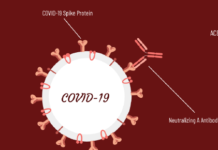Itzel Bernabe and Karla Arellano; Farnsley Middle School (Louisville, KY)
Have you ever wanted to forget something like a family member dying or going through bullying? According to Dr. Marijn Kroes, a postdoctoral researcher at Radbound University Nijmegen in the Netherlands, you can erase your memory.

According to Kroes, our memories are like plastic. That means that our brains can be changed and erased. This can help people that suffer from horrible memories, such as a family member dying, bullying, anxiety, or even post-traumatic stress disorder (PTSD). PTSD is a severe psychological shock. Recalling that event can bring on anxiety and other problems to the victim.
The U.S Department of Veterans Affairs states that about 5.2 million adults have PSTD in a given year.
In research published in December 2013, Kroes used electroconvulsive therapy (ECT), which applies the electrical shocks to the brain, to erase memories. When they are doing the procedure, the doctors first would make you remember the bad memories. After you remember the event they will put you to sleep and then give the ECT to your brain.
In conducting the research, Kroes and his team had patients listen to two sad stories while looking at some pictures that go along with the story. In one story, a boy was hit by a car and later at the hospital the doctors had to cut his feet off. In the other story, a woman was attacked in an alley. A week after listening to the stories each patient looked at a photo from the events. The doctors asked questions and forced them to remember the details. While they were asleep some of the patients received the ECT to the brain. A day later each patient took a multiple-choice test, they had to remember both of the stories. People who did not receive the ECT remembered both of the stories well. The patients that received the ECT did not remember much according to the multiple-choice test they gave them. They scored very poorly but they still remembered some details. They tested about 42 patients.
According to Wikipedia, ECT came up in the 1930’s. It started out as an experiment where psychiatrists noticed that some heavily distressed patients would improve after an epileptic fit that was similar to an ECT, but the idea closed down so did the idea. It then came back in the 1970’s when doctors found new ways to treat long-term mental illness.
“This treatment cannot be used to just forget a simple bad memory; a memory that doesn’t block you out from the world,” Daniela Schiller, a neuroscientist at Mount Sinai School of Medicine in New York, said in an article in societyforscience.org. Schiller also said that although the new study is promising, she saw that Kroes team had more work to do because the drug that they used to put the patients to sleep may have also helped with the memory loss. She also said that people might remember details differently than with real life problems.
Itzel Bernabe and Karla Arellano

This work is licensed under a Creative Commons Attribution-NonCommercial-NoDerivs 3.0 Unported License













